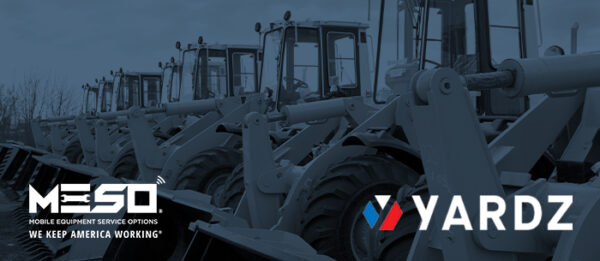
By Jason Perez, CEO of YARDZ — In an era when efficiency and cost-effectiveness are paramount for construction companies, telematics technology emerges as a game-changer, especially in the management and maintenance of assets. Telematics, a method of monitoring assets by combining GPS technology with on-board diagnostics, can track the location, movement, status, and behavior of equipment and vehicles within a fleet. This technology not only offers a pathway to significant cost savings in asset maintenance but also streamlines the maintenance process, making it more effective and less time-consuming. Here’s a look at the many ways that construction companies can leverage telematics to achieve these objectives:
Reducing Maintenance Costs
Predictive Maintenance
Telematics systems enable predictive maintenance, a proactive approach that can drastically reduce maintenance costs. By monitoring vehicle health in real time, telematics can predict equipment failures before they occur. Sensors can track everything from engine performance, fuel usage, and tire pressure to oil pressure, brake wear, and battery health. This data allows fleet managers to identify potential issues early and perform maintenance only when needed, preventing unnecessary routine checks that often lead to excessive spending. Optimizing Field Usage: Fuel is one of the biggest expenses in vehicle operation. Telematics can monitor driving behaviors that lead to excessive fuel consumption, such as idling, hard braking, and rapid acceleration. By analyzing this data, companies can implement training programs to encourage more fuel-efficient driving habits among their operators, leading to significant cost savings.
Enhancing Vehicle Utilization
Telematics data can help companies optimize the usage of their assets, ensuring that vehicles and equipment are used efficiently and not sitting idle. By understanding usage patterns, companies can balance the workload across their equipment, potentially reducing the total number of assets needed and thereby lowering the maintenance costs associated with each asset.
Improving the Maintenance Process
Automating Maintenance Scheduling
Telematics systems can automate the scheduling of maintenance tasks based on real-time data and historical performance, ensuring that equipment and vehicles receive service exactly when needed. This reduces the risk of downtime due to unexpected breakdowns and extends the lifespan of the asset. Automated alerts can notify managers of upcoming maintenance requirements, ensuring no service is overlooked.
Customized Maintenance Plans
With detailed data on each asset’s usage and condition, telematics allows companies to create customized maintenance plans instead of relying on generic schedules. As a result, assets that are used more often can receive more frequent maintenance, while those with lighter usage can have less frequent servicing, optimizing maintenance resources and ensuring each asset gets precisely the care it needs.
Streamlining Maintenance Records
Telematics simplifies the documentation process, keeping accurate and easily accessible records of maintenance history, asset usage, and performance data. This centralized information system enhances decision-making regarding vehicle repairs, replacements, and overall fleet management. Ultimately, this ensures compliance with regulatory requirements and will provide relevant material in the event of any warranty recovery claims.
Enhancing Supplier and Workshop Communication
Sharing telematics data with suppliers and workshops facilitates more effective communication regarding vehicle maintenance needs. This ensures that the right parts are available when needed and maintenance can be performed promptly, reducing asset downtime and improving the efficiency of the maintenance process. Tying in your service providers can provide a tremendous safety net to your asset maintenance and redundancy to ensure that assets don’t exceed preventative maintenance intervals, key inspections, or calibrations.
Conclusion
For construction companies, the adoption of telematics in vehicles and construction equipment represents a substantial opportunity to reduce maintenance costs and enhance the effectiveness of the maintenance process. By enabling predictive maintenance, optimizing fuel usage, enhancing vehicle utilization, automating maintenance scheduling, providing customized maintenance plans, streamlining maintenance records, and improving supplier communication, telematics technology offers a comprehensive solution to many of the challenges faced by fleet managers. As the construction industry continues to evolve, leveraging telematics will be key to staying competitive, ensuring operational efficiency and maximizing profitability.
About the Author
Jason Perez is the CEO of YARDZ, a leading asset-management platform. He can be reached at [email protected]. Follow him on LinkedIn here.